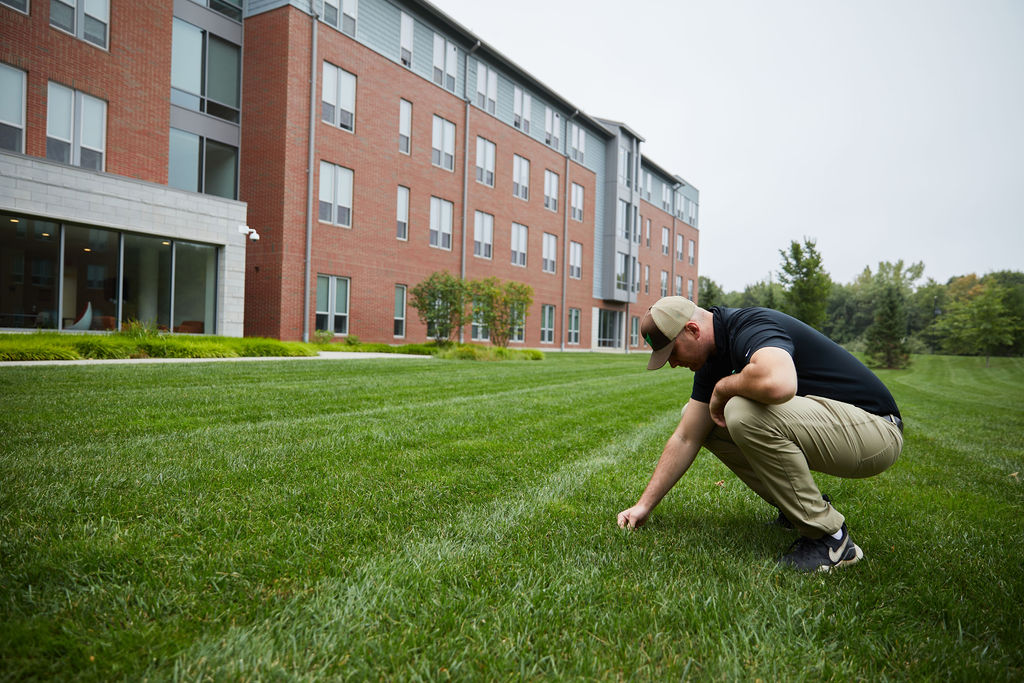As homeowners, we often take our lawns for granted – we assume that it will always be lush, green, and healthy. But have you ever wondered about the science behind turfgrass? Turfgrass science is a fascinating field that focuses on the growth, management, and maintenance of grasses used for lawns, sports fields, golf courses, and other landscapes. In this blog, we’ll explore the essentials of turfgrass science, what it involves, and how it can benefit homeowners like you.
Anatomy and Physiology of Turfgrass Plants
Turfgrass science is inextricably linked to botany, the study of plants. To understand turfgrass science, we need to know the anatomy and physiology of turfgrass plants. Turfgrass plants are made up of various parts, including the stem (culm), the leaves (blades), the crown (the base of the plant), and the roots. Each part has a specific function and plays an essential role in the growth and development of the plant. Understanding the anatomy and physiology of turfgrass plants is critical to proper management and maintenance.

Soil Science and Fertility Management
The study of soil science is an integral part of turfgrass science. Healthy soil is essential for the growth and development of turfgrass. Soil provides the plants with nutrients, water, and oxygen. The soil also plays a role in temperature regulation and disease prevention. Fertility management involves maintaining the correct balance of essential nutrients, such as nitrogen, phosphorus, and potassium. This requires an understanding of the soil’s composition, pH level, and nutrient levels.
Pest Management and Disease Control
Managing pests such as insects, mites, and rodents is crucial to maintaining a healthy and green lawn. Turfgrass science involves identifying pests and developing strategies to manage them. This can include using pesticides, natural predators, and cultural practices such as proper irrigation and mowing. In addition to pests, disease control is also essential in turfgrass science. Diseases can be caused by fungi, bacteria, viruses, and nematodes. Identifying and managing these diseases requires an understanding of the pathogen, its life cycle, and appropriate control measures.
Turfgrass Breeding and Genetics
Advancements in genetics and breeding have played a significant role in the development of turfgrass science. Scientists have developed turfgrass varieties that are resistant to pests and diseases, require less water and fertilizer, and are more resilient to stress. Turfgrass breeding involves crossing different types of turfgrass plants to create new varieties with desirable traits. Genetics plays a role in understanding the heredity of these traits and developing methods to breed them.

Lawn and Turf Management
Lastly, lawn and turf management are critical components of turfgrass science. Proper lawn care involves practices such as mowing, irrigation, and fertilization. Additional practices, such as aeration, topdressing, overseeding can also be utilized to maximize turf health and thickness. The goal is to maintain a healthy, green lawn that is aesthetically pleasing and conducive to outdoor activities.
Turfgrass science is a complex and fascinating field that involves the study of plant anatomy, soil science, pest management, turfgrass breeding, and lawn management. As homeowners, understanding the essentials of turfgrass science can help us improve the health and beauty of our lawns. By implementing proper management practices, we can create a low-maintenance, drought-resistant, and disease-free lawn that we can enjoy all year round. With the right knowledge and tools, our Proscape turfgrass scientists and enthusiasts can create a lush, green oasis in your own backyard.